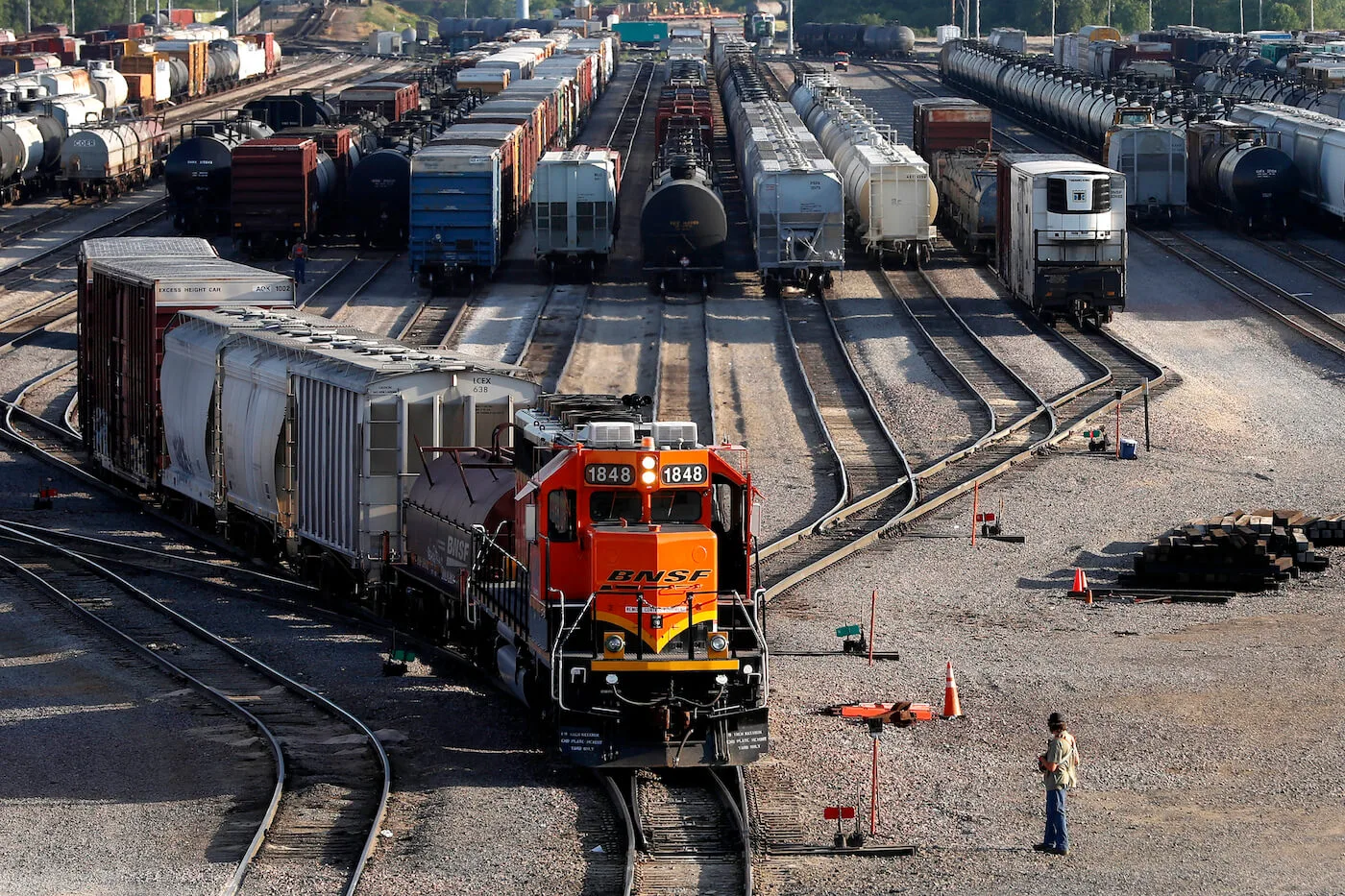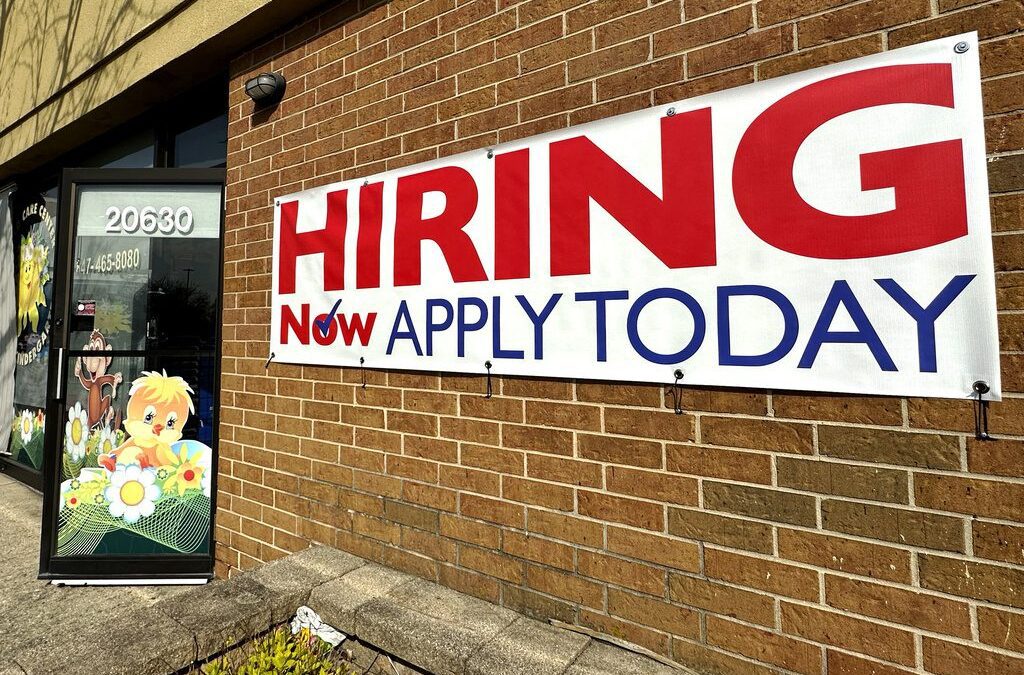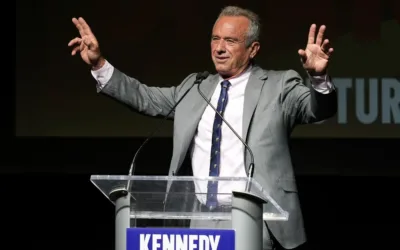
A BNSF rail terminal worker monitors the departure of a freight train, on June 15, 2021, in Galesburg, Ill. (AP Photo/Shafkat Anowar, File)
Profitable carriers are firing workers for going to a doctor or attending a funeral.
Editor’s Note: This story by reporter Amie Rivers originally appeared in our sister publication, Iowa Starting Line. Additional information has been added from the Associated Press and other sources as noted.
Christopher Smith wants you to know two things.
One: A nationwide railroad strike is the last thing his Sheet Metal, Air, Rail, and Transportation (SMART) members, some 700 of whom work for Iowa’s rail carriers, want. For the last three years, and through an arduous federally mandated bargaining process, they’ve tried to come to an agreement with their employers.
Two: The rail carriers think those workers don’t deserve more. And that came as a shock to workers when they read about it in the national media last month.
“The Carriers maintain that capital investment and risk are the reasons for their profits, not any contributions by labor,” a summary from the Presidential Emergency Board, which is mediating between the two sides, said.
“That sent a tidal wave through the membership,” Smith, the Iowa State Legislative Director for SMART’s transportation division, said. “How do you come to a national table and say that?”
Such language from the carriers, plus threats to embargo certain routes even before a strike deadline of Thursday, could mean a worker strike, or lockout of workers by the carriers, is imminent. Here’s what that means for the workers, the rail lines, and you.
What do workers and carriers disagree on?
Wages and health care costs are up there, but particularly for the two unions that cover train operators specifically, they want to amend the punishing new attendance policy called “Hi-Viz,” as well as railroads’ slow decreasing of engineers from two to one under “Precision Scheduled Railroading.”
“Under the Hi-Viz points-based policy that began in February, BNSF workers are given 30 points for the rest of their careers and docked points – anywhere from two to seven – for days taken off outside of already allocated vacation days,” WQAD reported earlier this year. “They can earn points back by working 14 days straight, but the total number of points can never exceed 30.”
Those issues, plus the “always on call” nature of operating trains and railroad layoffs, have caused many rail workers to leave the profession, amounting to a 20% reduction in the workforce since 2019, compounding the issues.
“You have fewer people doing more work faster,” said Ross Grooters, the co-chair of Railroad Workers United, who works as a locomotive engineer in Des Moines. “And that speed-up—coupled with these attendance policies that are very strict—have just really hampered quality of life to the point that we need to do something about it.”
According to a story in the Washington Post, “labor groups say workers have been fired for going to routine doctor’s appointments or family members’ funerals. Conductors and engineers can be on call for 14 consecutive days, for up to 12 hours daily. They also don’t get sick days. And while the unions have softened their demands in recent weeks — for example, they are now asking for unpaid sick days, instead of demanding paid sick days — the railways have not offered any counterproposals on these demands.”
It’s not as if rail carriers are strapped for cash to pay what workers want: Union Pacific, the largest publicly traded US railroad, paid investors more than $41 billion in dividends and share buybacks over five years through 2021, according to one Bloomberg analysis. In the first six months of 2022, the company added another $5 billion to shareholders’ coffers.
“Contrary to what the carriers may say, our highly skilled members’ contributions are the reason for the carriers’ extremely high profits,” said SMART General President Joseph Sellers Jr. “It’s about time that our members receive the fair contract that we have been fighting for, and that the carriers have been fighting against, for the past several years.”
Has a railroad strike happened before?
Railroad workers from Class I, or the biggest rail carriers, haven’t gone on strike since 1992. That’s partly because of the federal mediation and dispute resolutions mandated by the Railway Labor Act of 1926, enacted to protect the biggest source of interstate commerce from extended stoppages.
Basically, after several rail strikes in the late 19th and early 20th centuries, Congress came together with both the railroads and the unions, coming up with a set of unique, federally guided proposals for the industry (airlines were added in 1936).
As a result, the two sides must abide by special procedures, including (if necessary) the National Mediation Board and the aforementioned Presidential Emergency Board (PEB), as well as mandatory “cooling-off periods.”
That final cooling-off period ends just after midnight on Sept. 16.
Most of the 12 unions that cover workers have at least tentatively agreed to the Aug. 16 PEB recommendations, which included wage increases amounting to an average of 4.4% per year for the next five years.
But at least two unions—the Brotherhood of Locomotive Engineers and Trainmen (BLET), and the Transportation Division of SMART—are holding out, saying the PEB-recommended wage increases don’t cover inflation, and haven’t considered draconian attendance requirements that force workers to be on call virtually anytime.
Those unions cover most conductors and engineers, which make up the two-person crews that drive freight trains. If they strike, the entire system will grind to a halt regardless.
What would be the effects of a rail strike?
Such a strike, if it happens Thursday, could idle more than 7,000 long-distance trains per day. The resulting ripple effect could be catastrophic on the nation’s supply chain.
In Iowa, that means a lot of agricultural products, from grain to tractors to ethanol, are frozen in place from going out, and key implements like fertilizer won’t come in, Smith said, though he didn’t have a dollar figure for the potential statewide impact.
Nationally, industry groups warn a strike or lockout could come at a cost of around $2 billion per day. The White House is working through contingency plans to keep the most critical pieces of the supply chain, including chlorine for cities’ wastewater treatment plants, moving.
The Associated Press reports that in addition to all the businesses that rely on railroads to deliver their goods, passenger railroads are also affected because many of them operate on tracks owned by one of the freight railroads. Amtrak has already canceled several of its long-distance trains because there wouldn’t be enough time for them to reach their destinations before a strike or lockout would be allowed to begin at 12:01 a.m. Friday.
Amtrak already suspended its California Zephyr and Empire Builder lines that run from Chicago to the West Coast, and starting Wednesday it will stop running its City of New Orleans, Starlight and Texas Eagle lines along with several others.
Commuter railroads would also be affected. In Chicago, Metra warned its riders that it wouldn’t be able to run most of its trains if there is a strike.
But what’s lost in framing the issue that way is the cost to the approximately 125,000 rail workers affected, the presidents of SMART and BLET said.
“The railroads are using shippers, consumers, and the supply chain of our nation as pawns in an effort to get our Unions to cave into their contract demands knowing that our members would never accept them,” said SMART and BLET presidents in a joint statement to the media this week. “Our Unions will not cave into these scare tactics, and Congress must not cave into what can only be described as corporate terrorism.”
To Grooters, who has worked for the railroads for 20 years, it’s on the hugely profitable railroad carriers to correct the problem. Besides forcing workers to be constantly on call, eliminating their ability to plan anything on their time off, railroads have cut the workforce in order to juice profit margins at a pace even industry analysts say is unsustainable.
“They’ve created this crisis to squeeze labor,” he said, asking Iowans to contact their congressional representatives about it. “They’re just at their own peril harming the entire freight railroad system.”
At this late hour, Smith still hasn’t given up hope that the sides can reach an agreement.
“We’re still at the table negotiating, (even) after they make a statement like that,” Smith said. “There is still a chance for the process to work.”

This billionaire’s PAC is spreading a big lie about Tammy Baldwin, Medicare, and taxpayer savings
Restoration PAC, funded by Uline’s Richard Uihlein, twists the significance of forcing Big Pharma to negotiate for lower bulk pricing on Medicare...

New Biden rules deliver automatic cash refunds for canceled flights, ban surprise fees
In the aftermath of a canceled or delayed flight, there’s nothing less appealing than spending hours on the phone waiting to speak with an airline...

Opinion: It’s time for Congress to fight for small businesses instead of big corporations
May is National Small Business Month. Our elected leaders need to show leadership all year long. For the past 27 years I’ve been fortunate to pursue...

Biden makes 4 million more workers eligible for overtime pay
The Biden administration announced a new rule Tuesday to expand overtime pay for around 4 million lower-paid salaried employees nationwide. The...




